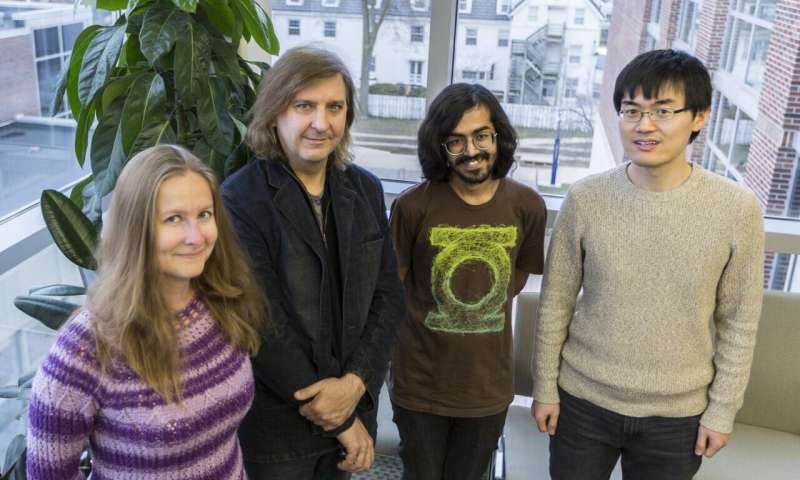Mathematical models provide a snapshot of the human gut microbial community

Microbial communities can be found everywhere—from lakes to the soil on the ground, they are omnipresent yet invisible to the naked eye. Within those environments there exist dynamic communities which fluctuate in response to environmental changes. One such example is the human gut microbiome, which is comprised of microbes that influence the overall landscape of the gut.
Through years of research on the human gut microbiome, the idea that microbial species composition influences gut health and disease has become more evident. This idea was the motivation for Sergei Maslov, Professor of Bioengineering and Bliss faculty scholar in the Carl R. Woese Institute for Genomic Biology at the University of Illinois at Urbana-Champaign, who led the research to study how microscopic ecosystems are organized and how various environmental factors, such as nutrient viability, competition for nutrients, and bacteriophage predators can shape these microbial communities. This study was co-led by Ph.D. graduate students Tong Wang of Physics and Veronika Dubinkina of Bioengineering, and MIT postdoctoral fellow Akshit Goyal, all co-authors of the findings reported in PLOS Computational Biology.
"Each one of us has, you know, more than 100 species in our gut so it's a real rain forest down there," explained Maslov. "What is more challenging is to quantify what kinds of metabolites they are consuming and producing. It would be great progress to be able to predict the metabolic profile just from the species, which is kind of our holy grail."
In a proof-of-principle study, researchers leveraged mathematical models that were capable of predicting metabolites generated by microbial species within the gut. This model provided support for a four level trophic organization in the human gut microbiome where, similar to macroscopic trophic webs, microbes were consuming nutrients excreted by other microbes. Their findings also suggest that the species composition systematically changes along the gut, with bacteria near the end of the gut forming the lowest trophic level.
"What the microbes excrete can be eaten by others so you can have an ecosystem much like the trophic web in savannas where grass, antelopes, and lions exist," he said. "We have the structure of this web and we want to ask how much can we predict by just knowing the network without any parameters."
In a similar eLife study (DOI: 10.7554/eLife.49720), researchers harnessed mathematical models to examine the factors that contribute to regime shifts or abrupt, persistent transitions within these microbial communities and ultimately, the survival of an individual species. After modeling all possible stable compositions within a community, they could then predict the amount of nutrients necessary for each stable composition and likewise, what triggered regime shifts. Another study, reported in mSystems (10.1128/mSystems.00470-19), examined bacteriophages as another external factor that can induce regime shifts within these communities.
"If you use this regime shift which we simulated in our model you can introduce a phage with its benign host, but it will maintain the phage there and will suppress or completely eliminate detrimental species from the environment," he explained. "It might be one way to implement a phage therapy."
Future work will focus on adopting machine learning techniques and to harness bigger sets of data to evaluate missing parameters, with the ultimate goal of being able to control microbial communities.
"Microbial ecosystems are absolutely everywhere so not just the gut but the soil, bioreactors, and all of the biogeochemical cycles impacting climate, which all have a very significant contribution from microbial communities," he said. "Being able to somehow manipulate them in a robust and predictable manner is very important."
More information: PLOS Computational Biology (2019). DOI: 10.1371/journal.pcbi.1007524
Journal information: PLoS Computational Biology , eLife
Provided by University of Illinois at Urbana-Champaign




















